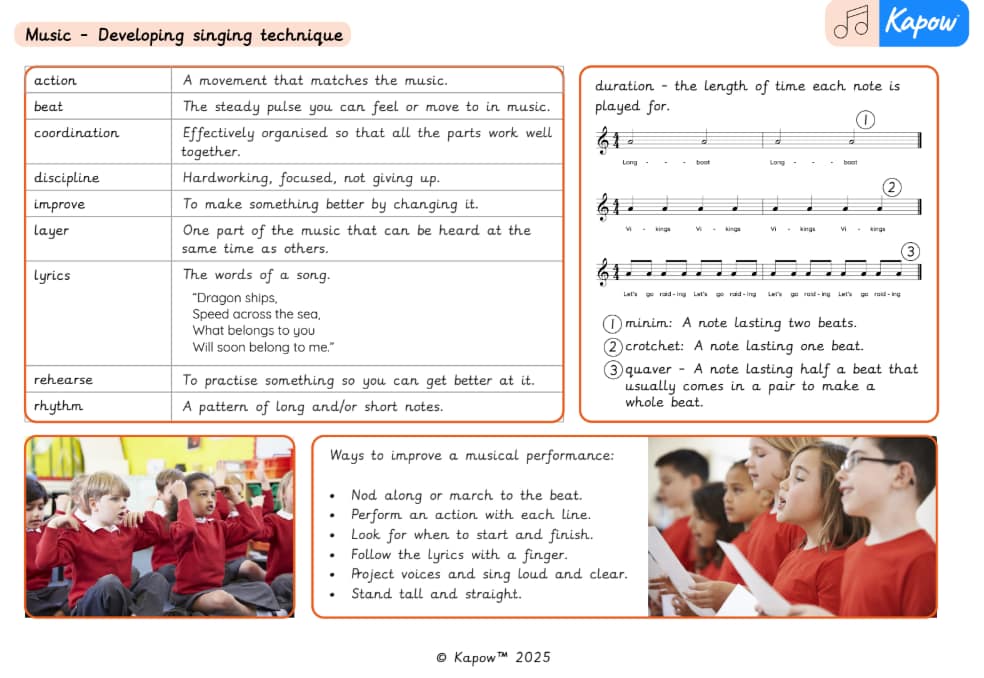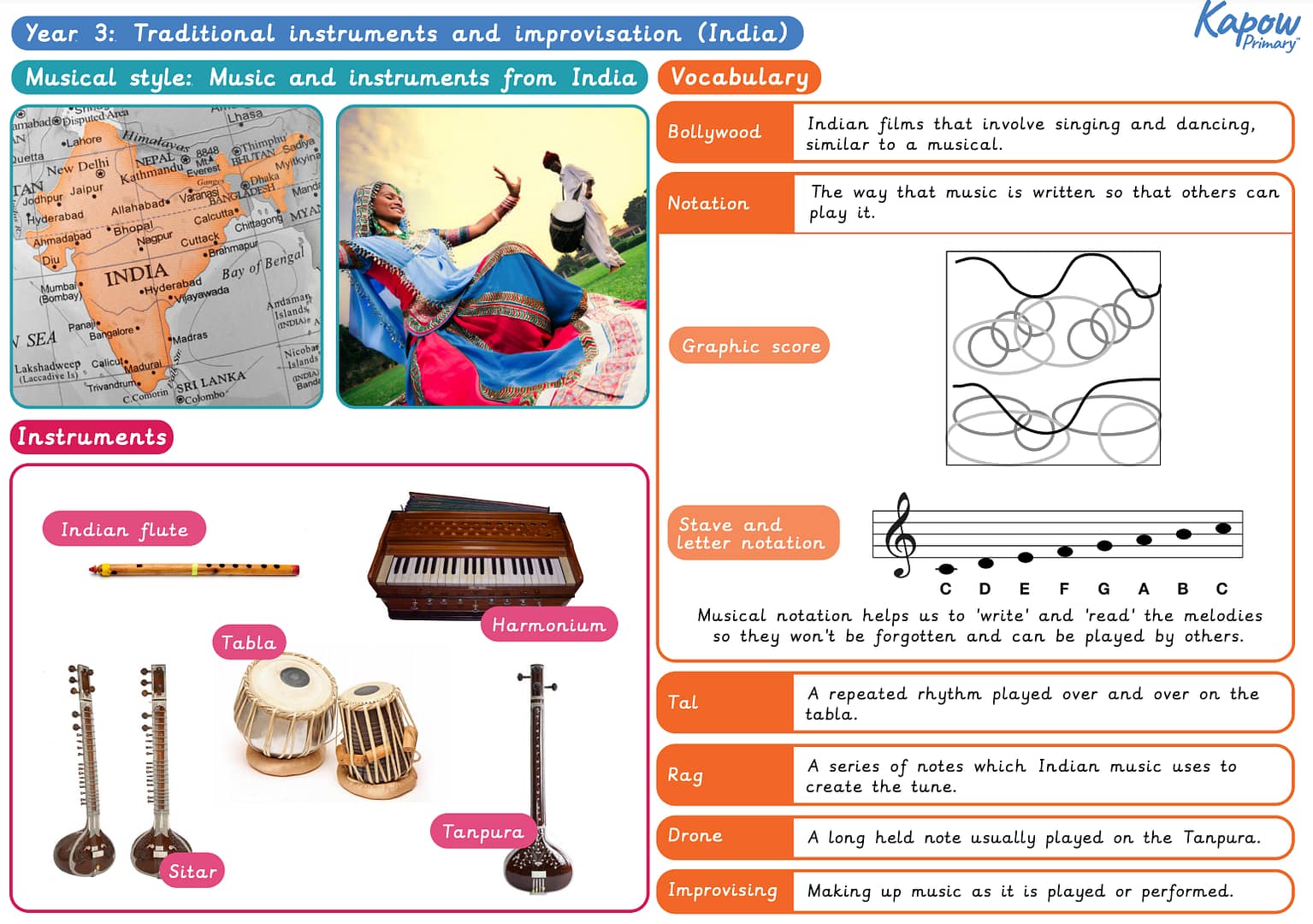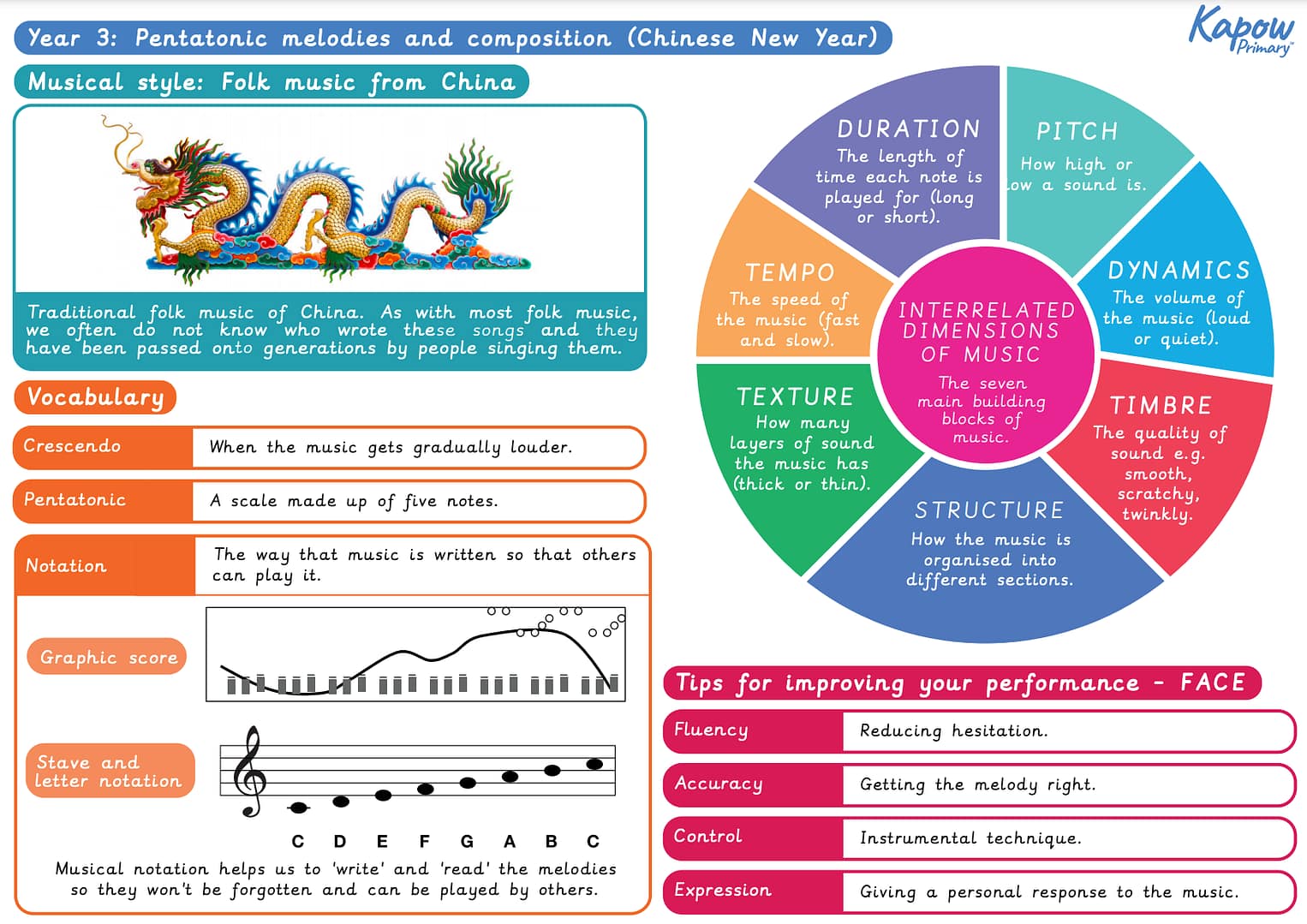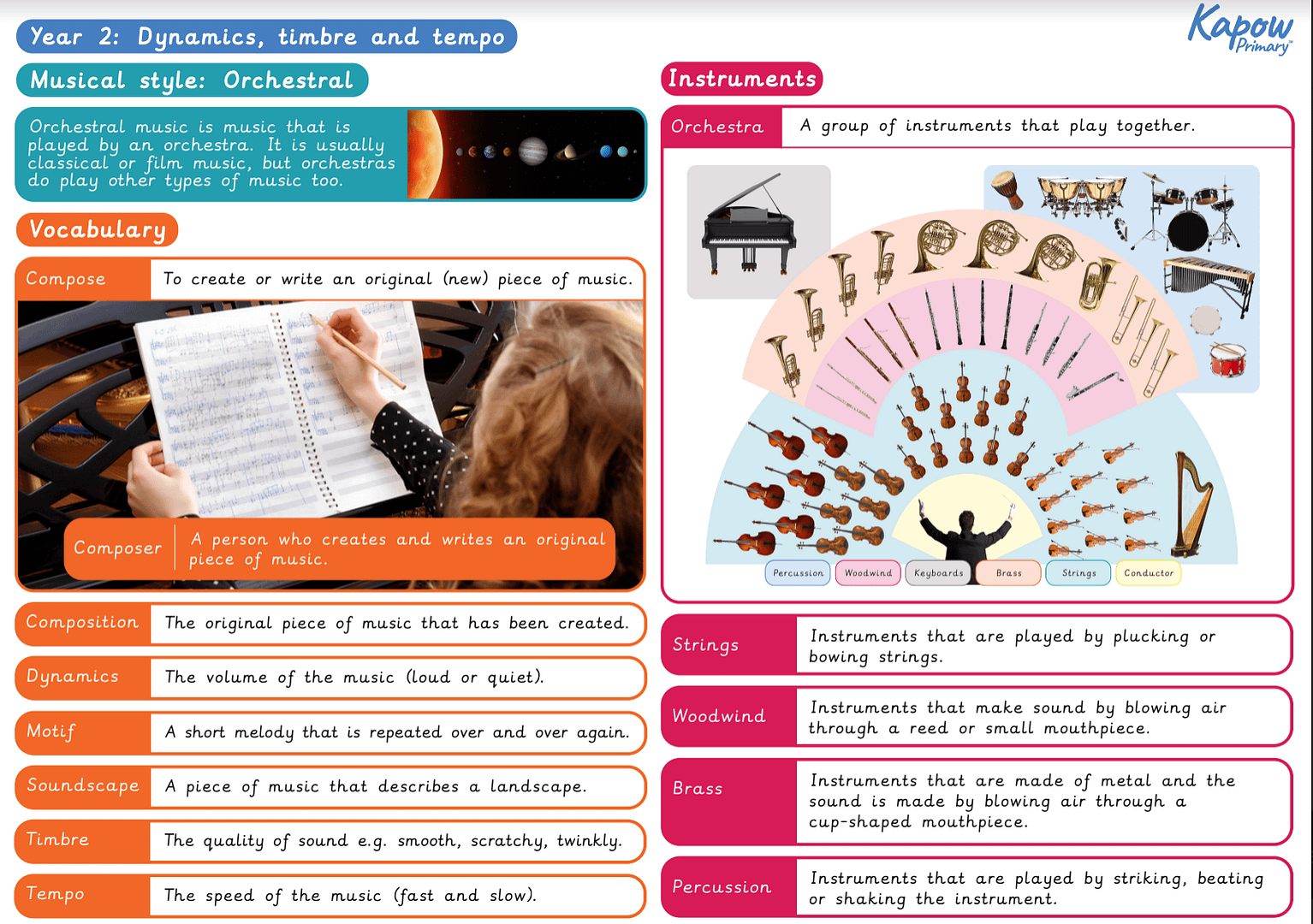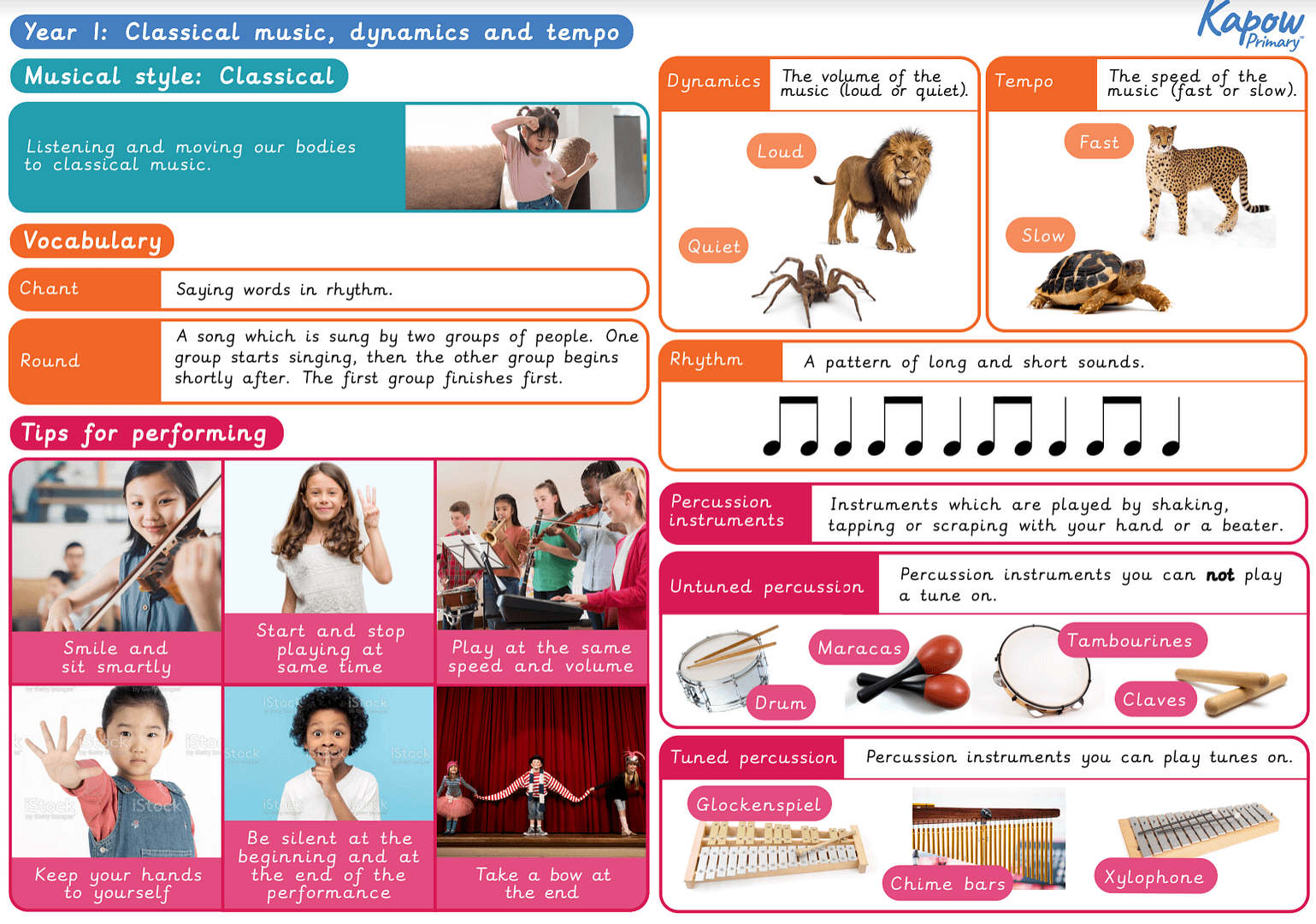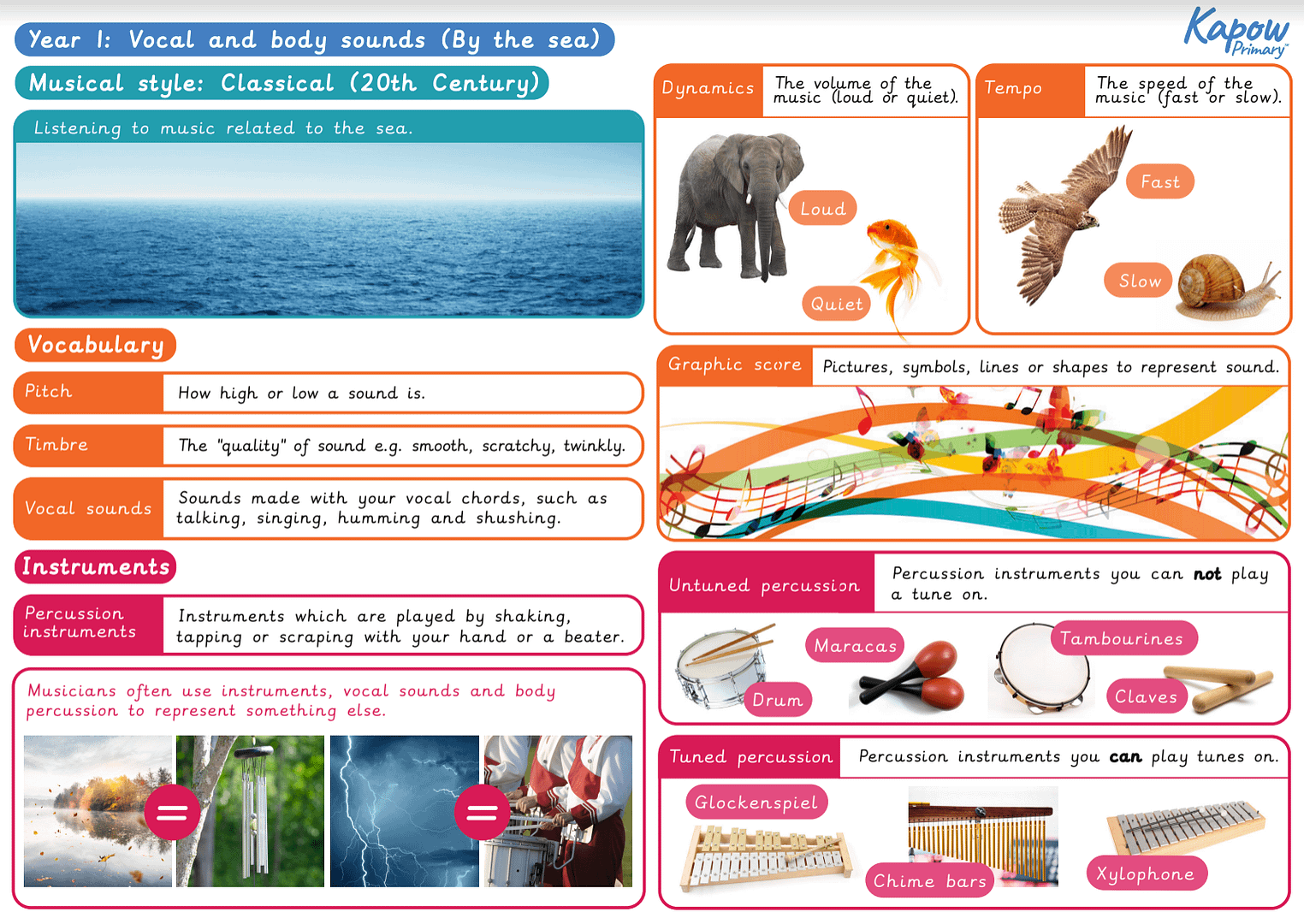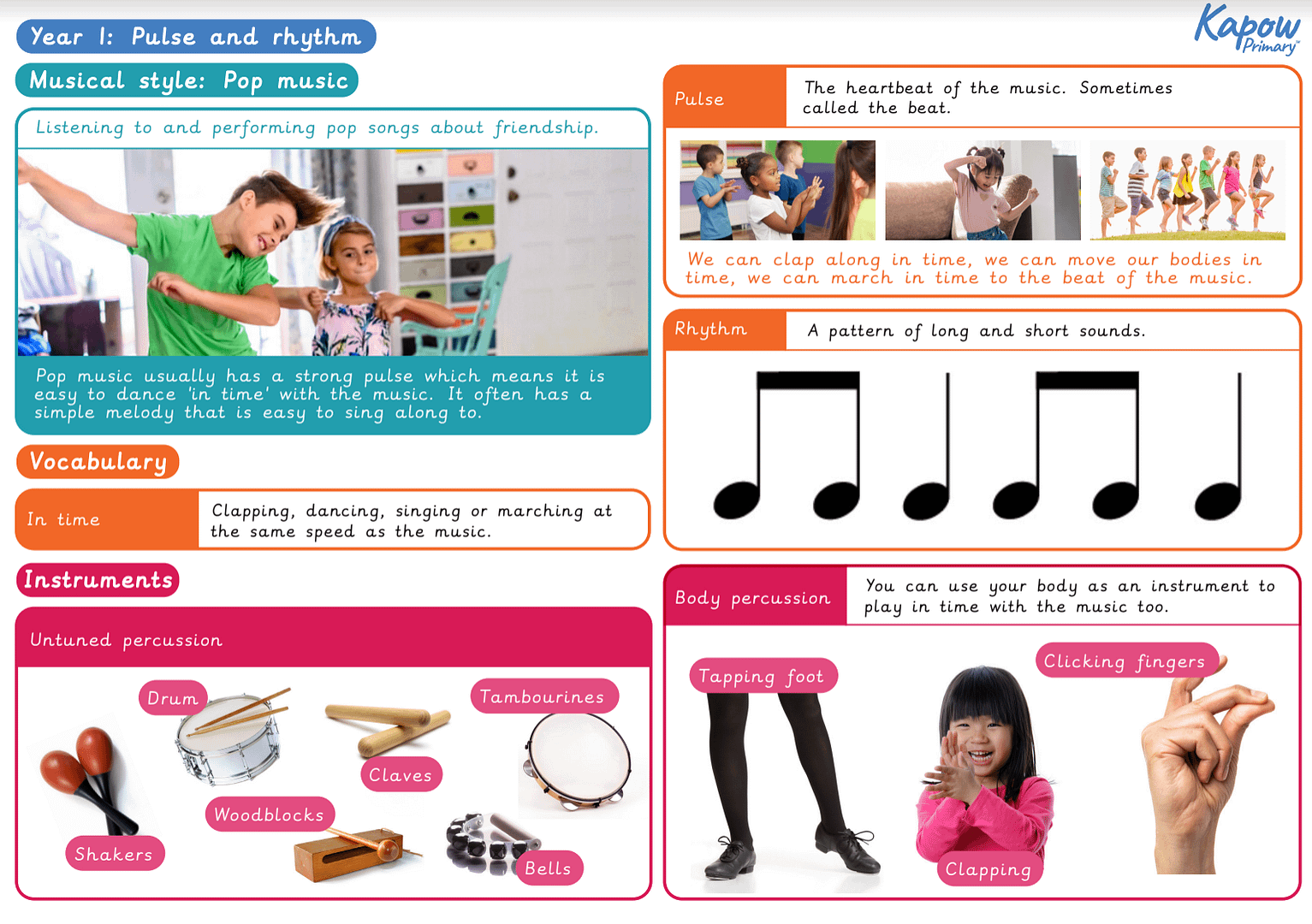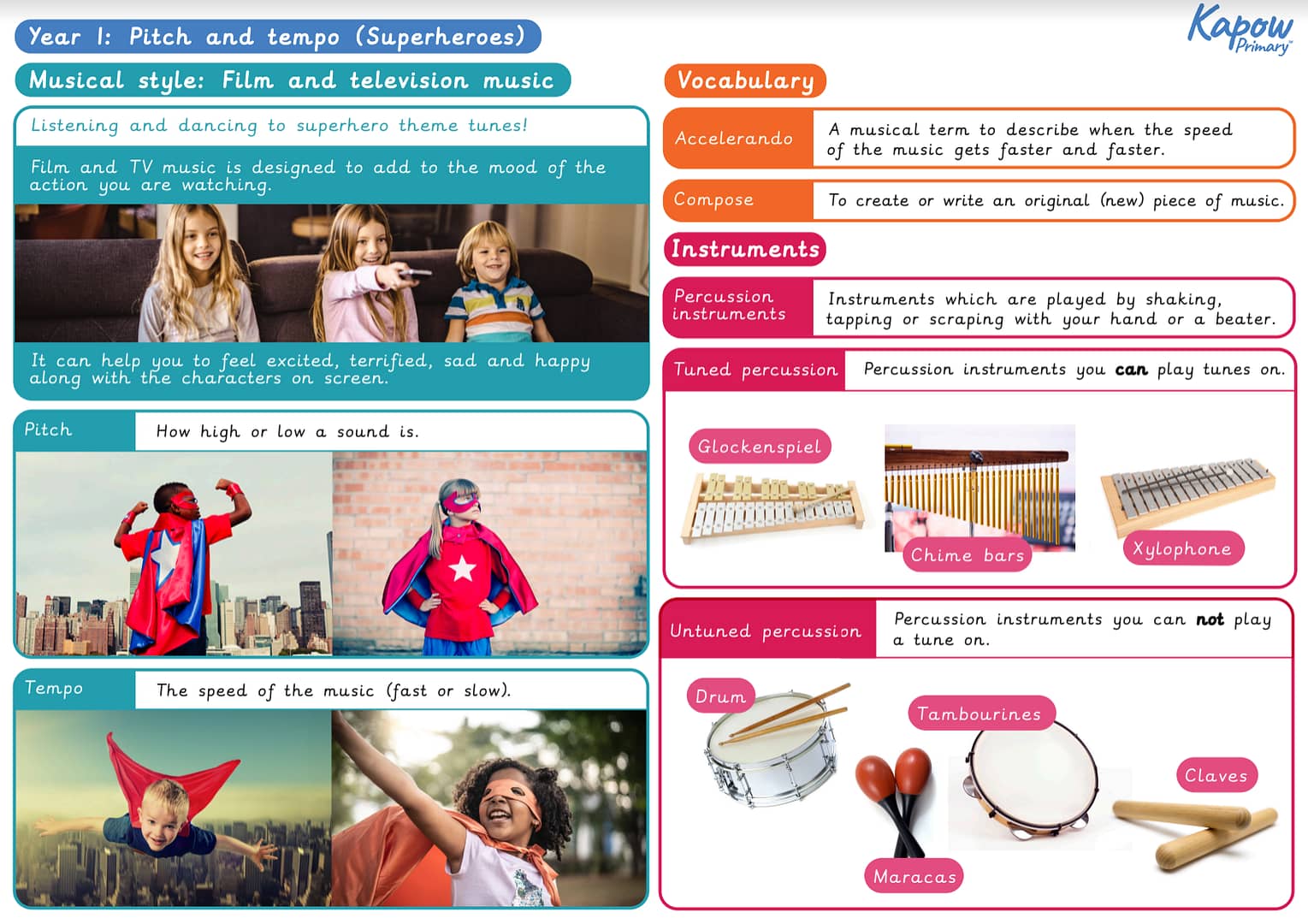Teaching resource: Knowledge organiser
Knowledge organiser – Music Y3: Traditional instruments and improvisation (India)
A Knowledge organiser that captures the essential knowledge and skills learnt throughout the unit Music, Year 3, Traditional instruments and improvisation (India).
This Music resource is designed to support the pupils as they explore traditional Indian music and its cultural significance. It introduces key vocabulary such as raga, tala, drone, pitch, and improvisation, helping the pupils understand how melody, rhythm, and harmony are used in Indian compositions. The pupils will also learn about traditional Indian instruments, such as the sitar, tabla, and tanpura, and how they contribute to the distinctive sound of Indian music.
Knowledge organiser – Music Y3: Pentatonic melodies and composition (Chinese New Year)
A Knowledge organiser that captures the essential knowledge and skills learnt throughout the unit Music, Year 3, Pentatonic melodies and composition (Chinese New Year).
This Music resource is designed to support the pupils as they explore traditional Chinese music and its cultural significance in Chinese New Year celebrations. It introduces key vocabulary such as pentatonic scale, tempo, dynamics, texture, and melody, helping the pupils understand how these musical elements are used in Chinese compositions. The pupils will also learn about traditional Chinese instruments, such as the guzheng, erhu, and dizi, and how they contribute to the distinct sound of Chinese music.
Knowledge organiser – Music Y2: Dynamics, timbre, tempo and motifs
A Knowledge organiser that captures the essential knowledge and skills learnt throughout the now archived unit Music, Year 2, Dynamics, Timbre, Tempo and Motifs.
This Music resource is designed to support the pupils as they explore how different musical elements create expression and mood. It introduces key vocabulary such as dynamics, timbre, tempo, motif, and structure, helping the pupils understand how composers use these elements to shape music. The pupils will also learn how to recognise repeated motifs in compositions and how tempo and dynamic changes affect a piece’s character.
Knowledge organiser – Music Y1: Classical music, dynamics and tempo (Animals)
A Knowledge organiser that captures the essential knowledge and skills learnt throughout the now archived unit Music, Year 1, Classic music, dynamics and tempo (Animals).
This Music resource is designed to support the pupils as they explore how composers use musical elements to represent animals. It introduces key vocabulary such as tempo, dynamics, pitch, texture, and timbre, helping the pupils understand how music can create imagery and mood. The pupils will also study classical works by composers such as Camille Saint-Saëns, Sergei Prokofiev, and Modest Mussorgsky, analysing how they musically depict different animals.
Knowledge organiser: Music – Y1 Timbre and rhythmic patterns (Fairytales)
A Knowledge Organiser that captures the essential knowledge and skills learnt throughout the unit Archived unit: Timbre and rhythmic patterns (Theme: Fairytales).
This resource supports pupils as they explore musical storytelling by responding to and interpreting the sounds and rhythms found in fairytales. It introduces key vocabulary and concepts such as timbre, rhythm, and pulse, helping pupils identify different instrumental sounds and use them creatively to represent characters or actions. The unit encourages active listening and performance, using tuned and untuned percussion instruments to bring stories like Peter and the Wolf to life. Through these experiences, pupils develop confidence in performing, composing, and describing music expressively.
Knowledge organiser: Music – Y1 Dynamics (Theme: Seaside)
Knowledge organiser: Music – Y1 Pulse and rhythm
A Knowledge Organiser that captures the essential knowledge and skills learnt throughout the unit Archived unit: Pulse and rhythm (Theme: All about me).
This resource supports pupils as they explore the foundational elements of music through the exciting theme of superheroes. It introduces key vocabulary and concepts such as pulse, rhythm, and ‘in time’, helping pupils understand the steady beat of music and how long and short sounds can be used to create rhythmic patterns. The unit encourages movement, body percussion, and the use of untuned instruments like maracas, drums, tambourines, and woodblocks to reinforce rhythmic awareness. Through practical activities and performance, pupils build confidence in responding to music and performing as part of a group.

